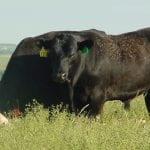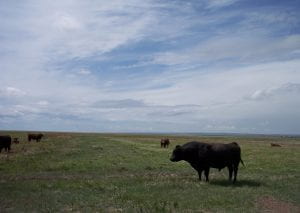by Sandy Johnson, extension beef specialist, Colby and A.J. Tarpoff, DVM, beef extension veterinarian
 A 2017 survey of herds across Kansas found Anaplasmosis positive herds in all reporting districts. See the May 2018 Beef Tips for a summary. It has been a more common problem in the eastern third of the state where prevalence is still higher, but increasingly noted across the state. The disease is caused by the Anaplama marginale bacterium which lives in the red blood cells of infected animals. Once an animal becomes infected, the body’s own immune system recognizes the abnormal red blood cells and removes the infected cells from the body. When the normal creation of new red bloods cells can’t keep up with the loss of the infected ones, the animal becomes anemic. The loss of red blood cells leads to a decrease oxygen carrying ability which results in clinical signs of disease. It usually takes about a month from time of infection to clinical disease but the range is 6-70 days. Although this disease can be spread during any time of year, clinical cases are most common during the late summer and early fall when transmission threats increase. Continue reading “Dealing with Anaplasmosis”
A 2017 survey of herds across Kansas found Anaplasmosis positive herds in all reporting districts. See the May 2018 Beef Tips for a summary. It has been a more common problem in the eastern third of the state where prevalence is still higher, but increasingly noted across the state. The disease is caused by the Anaplama marginale bacterium which lives in the red blood cells of infected animals. Once an animal becomes infected, the body’s own immune system recognizes the abnormal red blood cells and removes the infected cells from the body. When the normal creation of new red bloods cells can’t keep up with the loss of the infected ones, the animal becomes anemic. The loss of red blood cells leads to a decrease oxygen carrying ability which results in clinical signs of disease. It usually takes about a month from time of infection to clinical disease but the range is 6-70 days. Although this disease can be spread during any time of year, clinical cases are most common during the late summer and early fall when transmission threats increase. Continue reading “Dealing with Anaplasmosis”
 When the number of cows pregnant is far below expectations, poor reproductive performance by both cows and bulls must be considered. Keep in mind that in some cases multiple issues may contribute. The focus of this piece will be on the bull.
When the number of cows pregnant is far below expectations, poor reproductive performance by both cows and bulls must be considered. Keep in mind that in some cases multiple issues may contribute. The focus of this piece will be on the bull.